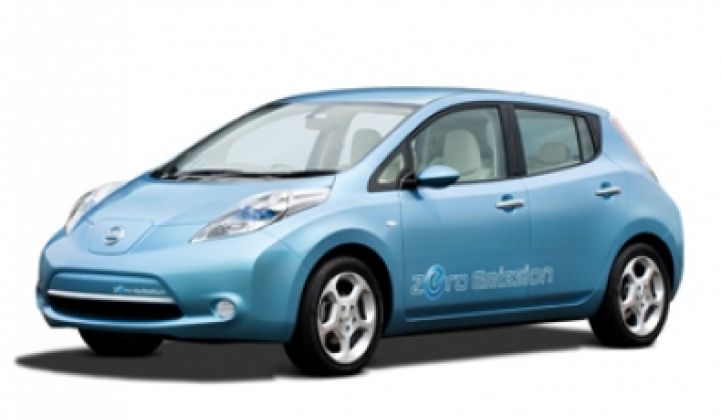ABB and Nissan, along with 4R Energy and Sumitomo Corporation of America, announced a partnership to test used batteries from Nissan Leafs as backup power sources on the electrical grid.
If the news on Thursday sounds familiar, it is. About six months ago, ABB partnered with General Motors to test used batteries from the Chevy Volt for storage.
ABB and Nissan will develop a Leaf battery storage prototype with at least 50-kilowatt hours of electricity, enough to keep the lights on for about two hours in 15 U.S. homes.
Batteries in electric cars have a lot of life left in them -- about 70 percent of their capacity remains after a decade in the car.
“The agreement will allow us to evaluate the commercial viability of a grid storage solution and develop a prototype to effectively reuse Nissan LEAF batteries,” Bruno Melles, head of ABB's Medium Voltage power products business, said in a statement. "We look forward to working with our partners to take electric vehicle battery energy storage technology a step further.”
What is the next step? For now it’s testing batteries to see what sort of form they can put the used batteries in. Two batteries could be bundled together for community energy storage, but even more could be combined for larger energy storage at a C&I facility or even a substation, said Gary Rackliffe, Vice President of Smart Grids North America at ABB. “We’re looking at building blocks where that could be a modular solution.”
Nissan and ABB expect to start utility pilots in two to three years. Currently, one of the only large community storage pilots underway is by American Electric Power and S&C. Starting six months ago, the utility started a Department of Energy-funded community energy storage pilot using 25 kWh lithium-ion battery packs that will be put in communities next to transformers that feed into three to five houses.
Thomas Weaver, the manager of distribution systems planning for AEP, said that the specifications for the project were open source. He explained, “In the deregulation days, we didn’t talk to each other, but that’s changing. By getting more folks to do the same thing, we can help drive down cost.”
The issue of community brings up many other issues. If it’s for power outages or to help curb peak, how much power can you use? What if your neighbor has his pool pump going and his air conditioning set at 67 degrees F while you’re sitting in the dark with the shades drawn and a single overhead fan on?
But for all of these projects, the focus for the next five to 10 years is to work out any technological glitches and bring the cost down. Car makers want to be proactive about managing the lifecycle of the battery and potentially having a revenue stream for the asset after it has run the course of the first of its nine lives in the car. Once the technology is worked out, someone else can tackle the power-hungry neighbor issue.



